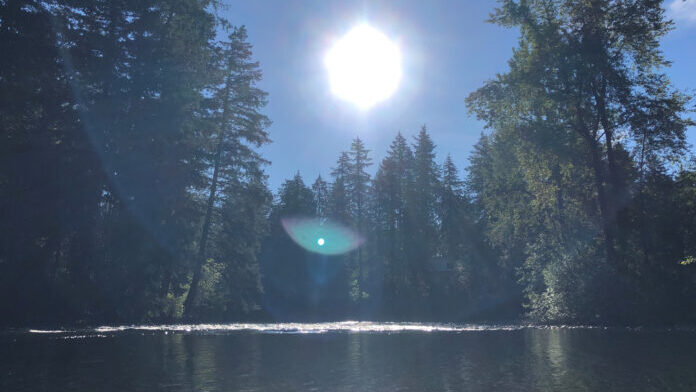The East Kootenay is starting off summer with elevated drought conditions, with level five reported in the Elk Valley while the rest of the region is at level three.
The provincial government measures drought from level 0 (normal or wetter than normal conditions) to level five (rare, severe dry conditions).
“It’s rare for this level of dryness to occur. The Provincial Drought Level Scale measures the severity of the natural drought hazard, but it doesn’t necessarily tell us the potential for water scarcity impacts,” said Doris Leong, Acting Director of Drought Operations with the BC River Forecast Centre.
“Whether an area experiences water scarcity can depend on a number of factors, including how resilient water systems are, local conditions because they may be different than the broader area that the drought level describes, and how water supply and demand are managed.”
Currently, Elk-Flathead Valley is the only water basin in the province at drought level five.
Leong says the impacts of increased drought levels on human and ecological values in particular areas must be assessed on a local level.
“For example, a water supply might experience different impacts than a farmer in the same area, depending on their capacity for water storage,” said Leong.
“There can be a lot of different factors that can affect whether water scarcity is experienced at any drought level.”
Leong says B.C. as a whole has experienced more intense, prolonged droughts in recent years, adding that this year is likely to continue that trend.
“Most of B.C. had a fairly dry winter leading up to this spring and summer, which really set the stage for those persistent deficits in precipitation,” said Leong.
“These long-term deficits mean that our watersheds need pretty substantial rainfall during the spring and summer. It will take more than just a weekend of steady rain to recover.”
Leong says conditions over the coming months will be the deciding factor for the trajectory of B.C.’s drought conditions.
“The summer weather will be the major driver of how drought conditions shape up. They could change, but much of that depends on whether we get cool and wet weather, hot and dry conditions, or some combination of the two,” said Leong.
“The current seasonal weather forecast from Environment and Climate Change Canada points to a warmer and drier summer than normal.”
With the potential for water scarcity, Leong says the public can play an important role in conservation.
“One thing we really encourage people to do is to start conserving water early, especially starting with those non-essential water uses and adopting efficient water use practices where you can,” said Leong.
“In basic terms, this means using water for fewer things and using it less often. We also always advise people to follow any water restrictions that may be in place.”
You can find information about your community’s current water restrictions on your municipal government’s website.
Leong says rain barrels and other water storage systems can help you conserve local water sources while ensuring you have a steady supply.
“If you have water storage or a reservoir available, take advantage of those rain events to fill that storage to capacity. That way, you can rely on it when conditions become dry again,” said Leong.
Be the first to know! Don’t miss out on breaking news and daily updates in your area. Sign up to MyEastKootenayNow News Alerts.



